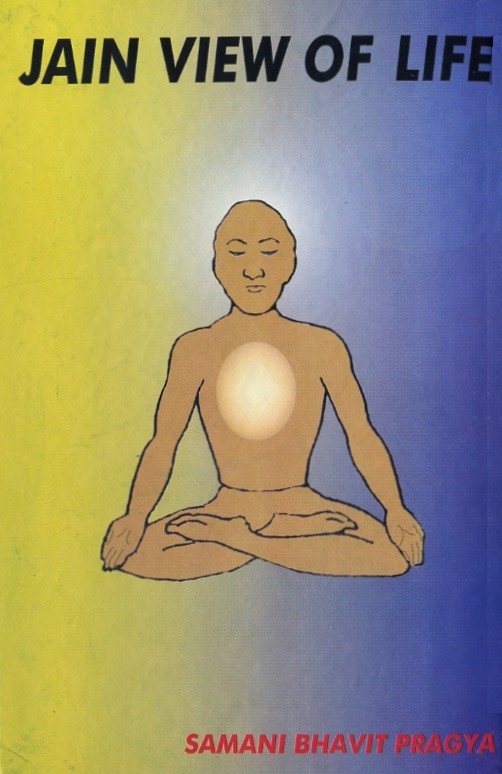Jainism
Since ancient times, there have been two distinct cultures, Shramana and Brahman. Brahmana culture belongs to vedic tradition, whereas Shramana culture represents Jainism and Buddhism. There have been many common points between them. Jainism is older than Buddhism; Buddhist scriptures refers the Nirgrantha Nayaputta for Lord Mahavira. The Jain religion was previously known such as Nirgrantha Dharma, Shraman Dharma. After two hundred years of Lord Mahavira, the word Jain came into being in the time of Acharya Mahagiri. Afterwards, Nirgrantha religion was known as Jainism.
Jainism is the oldest living religion of India. It has been lively, progressive, and informative. The word Jain has been derived from jin which means conqueror. Jin is that enlightened man who has acquired infinite knowledge, infinite perception, infinite energy, and pure consciousness by vanquishing passions; anger, pride, intrigue, greed, etc. In Jina, the Sanskrit root word is Jin which means conquest over all bondage of birth and death. The Jains are their followers who practice the path set down by Jina and the religion is followed by those known as the Jain Religion.
Origin of Jainism
Jain religion is eternal, and it has been revealed again and again in every one of the endless succeeding periods of the world by innumerable Tirthankaras. The first in the series of twenty-four in the current cycle of time was Adinath Rishabhadeva. Jainism was founded and expounded originally by Lord Rishabha. He inaugurated the age of action, the beginnings of human civilization, and the practice of religion. He also accorded inspiration of spiritual upliftment of mankind with multi-faceted development. The credit of the developing age goes to none else but Lord Rishabha.
Each Tirthankara reinstates the Jain order known as Jain Sangh. The twenty-fourth and last Tirthankar, Lord Mahavira, gave organizational shape to the present tradition about 2550 years ago. He established Tirth (a dock) consisting of monks, nuns, laymen, and laywomen. Tirth is known as Sangha, which means the union of the four above mentioned components; Sadhus (male ascetic), Sadhvis (female ascetic), Shravakas (laymen), and finally, Shravikas (laywomen). Tirth stands for a ford that leads across this sea of worldliness and shows the passage across worldliness is called Tirthankar. The strength of monks and nuns in his order was 14,000 monks and 36,000 nuns.
Among the many contributions of the tradition Ahimsa (non-violence), Aparigraha (non-possession), and Anekanta (non-absolutism) are the most vital, the central, the most valuable, and the most relevant concepts of today just as it was in the ancient epoch.
Jain Community
The two principle communities of Jainism are the Digambar and Swetambar. The terms Digambar (Achelaka) and the Swetambar (Sachelaka) signify the same sense. Achelaka means without cloth, and Sachelaka implies with cloth. In Mahavira's order, there are two types of monks.
Digambar
The literal meaning of the word is sky clad. Dig means sky and Ambara means dress. Sky is their dress. The open sky is their garment. That is why they are called Digambara. They regard that nudity is essential to get salvation. The male ascetic goes naked and possesses nothing except a peacock feather and a wooden jug for water. Later on, the Digambar sect also was subdivided into sub-sects such as Terahpantha, Beespantha, and Taranpantha.
Swetambar
Those belonging to the Swetambar group wear white cloth. The major sect is also divided into three sub-sects; Murtipujak, Sthankvasi and Terapantha. The former belongs to idol worshippers and the latter two are non-idol worshippers. The Murtipujaks are elaborate in majority. The Lax monks used to stay in temples and therefore came to be known as Chaityvasi. The establishment of Chaityvasi occurred in the ninth century (850) after the salvation of Lord Mahavira. They lived in affluence with all the comforts of life.
The prominent pilgrimages of the Murtipujaks are Palitana, Sammet Shikhar, Girnar, Pawapuri, Ranakpur, Abu etc. There are many Gachchha such as Tapagachchha, Khataragachchha, etc.
Sthankvasi
The Sthankvasi sect came into being in the sixteenth century. Lonkashah started a campaign against the laxity of monks and disowned the worship of idols. The follower of Lonkashah established the new sect. The new sect was set against idol worshipping. The householders built buildings in which to perform religious activities. Later on, the buildings were reserved for monks and nuns. They stayed exclusively inside those buildings, and that is why they are known as Sthankvasi.
Terapantha
Acharya Bhikshu founded Terapantha in 1817 after Mahavira's Salvation. He was the disciple of Acharya Raghunathji who brought about a revolution against the discrepancy between practice and the actual texts. The fundamental convention of Terapantha is that there is one Acharya; all monks and nuns are his disciples. Acharya has supreme power. Acharya Bhikshu organized the monastic order in a more disciplined and systematic form. He was fully against the buildings being reserved for the monks as well as other issues. He made real interpretations of the concepts of piety and charity, etc., based on canonical literature.
 Samani Bhavit Pragya
Samani Bhavit Pragya
